My girlfriend and I have been doing a good bit of hiking lately. I am always interested in what we can do to improve our chances of survival if something were to go wrong. On our last hike I was thinking about wilderness predator defense. This article will cover some general principles regardless of what predators you may encounter, as well as a little specific advice here and there.
This article contains affiliate links.
I have been writing about wilderness survival a lot lately. This has come at the expense of some of the other stuff my audience enjoys, like firearms-related content. I thought this would be a good way to combine the two topics. To be clear I’m not a wildlife biologist or anything like that. I’m just a dude that loves spending time outside and writing about stuff. A lot of this information has been gathered from other sources (including my own interview with grizzly attack survivor Todd Orr), some from experience (I’ve had some bear encounters) and some of it is just my own opinion. I’m not telling you what to do, just telling you what I do and giving you some things to think about.
Potential Predators
Our hikes are in well-populated black bear country. Though we’ve yet to run into a bear while hiking here, we routinely see tracks and scat. Occasionally – while traveling – we’ll hike in lion or grizzly territory and I have a wealth of historical hiking in these areas. Currently though, our biggest four-legged threat by a huge margin is the regular ol’ black bear by a long shot.
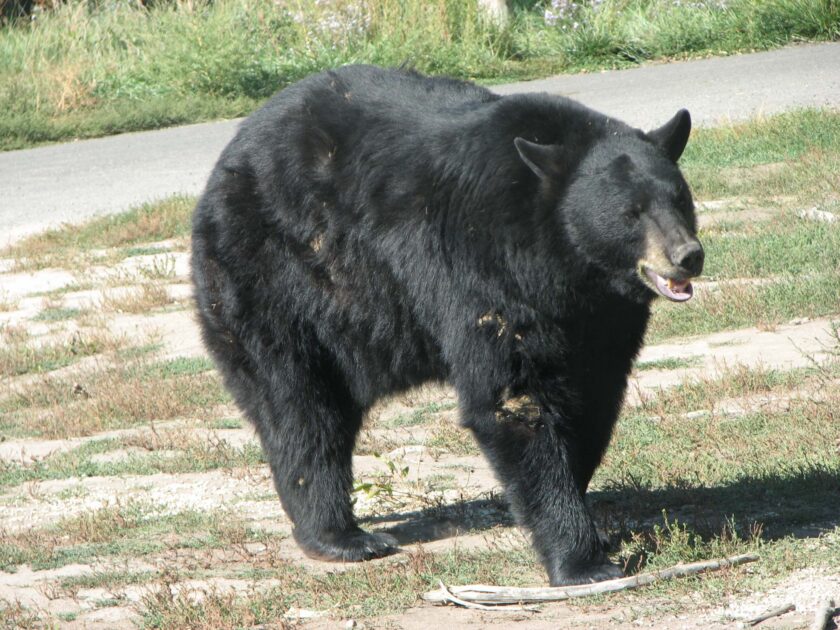
Black and brown bears represent the biggest threats to hikers, hunters, and other outdoorspeople in the lower 48. There are a few other assorted threats that I’ll briefly mention, though. Coyotes have been known to attack people, though pretty rarely. Likewise wolves certainly have the capability but are still pretty damn rare outside of carefully managed areas (and are totally absent from most of the United States).
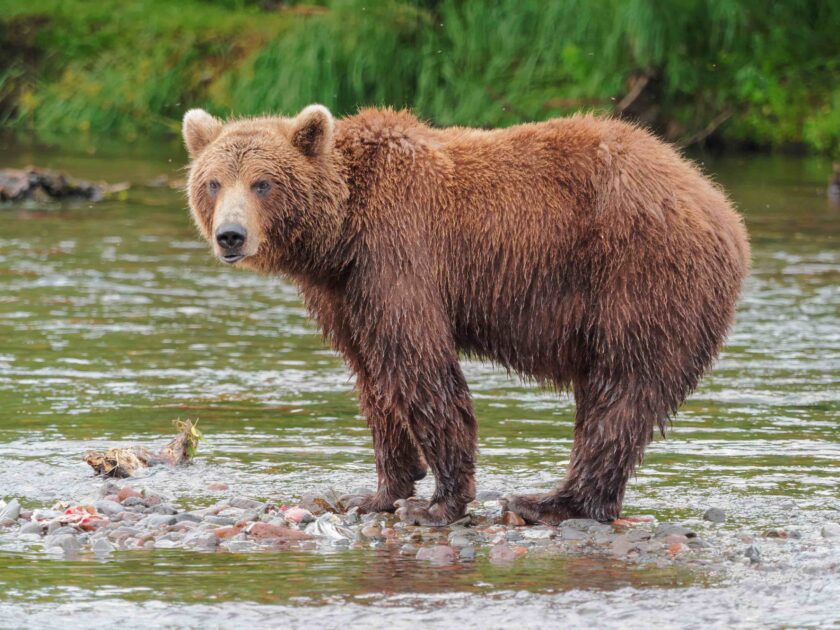
I would be remiss if I didn’t mention human threats. They certainly do exist in the wild, and I began thinking about them more strongly after our most recent hike, when I thought we were about to encounter a poacher on a low-traffic trail in a wilderness area. Long story, but turns out it wasn’t and it wasn’t any big deal… but I’d sure hate to run into an armed someone in the middle of committing a crime like poaching or drug tending.
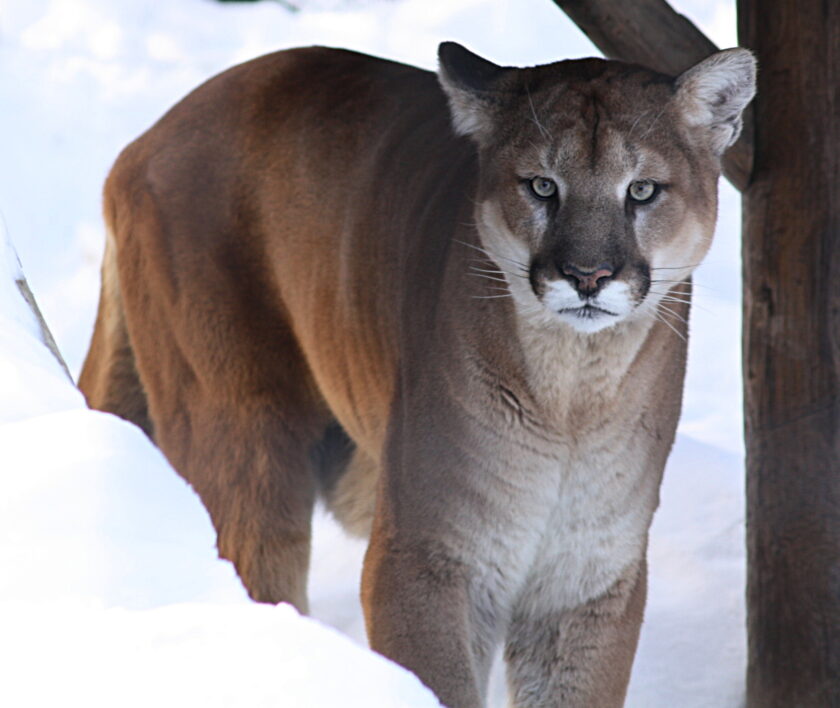
Generally this article will focus on defending yourself from bear and lion attacks, with some consideration given to human predators here and there.
Snakes
I will mention snakes, but only to say that they don’t really concern me a whole lot. I have spent tens of thousands of hours and hundreds of nights in the outdoors. I encounter snakes of any kind only infrequently. It’s usually pretty cool when I do, and 90% of the ones I have encountered are totally harmless. When I see a snake – even a venomous snake – it almost always wants to get away from me as quickly as possible. You wouldn’t think this is the case from reading gun magazines, though.
It’s hard to read an article about a “trail-gun,” “kit gun,” or general-purpose revolver without pistol-caliber shotshells being mentioned as a means to “deal with snakes.” There seems to be an fascination with shooting snakes and outfitting guns specifically for the purpose. Personally I’d prefer to live and let live, and let the snake go about his business. I’d also prefer not to be charged double for an under-performing round that is extremely limited in its usefulness.
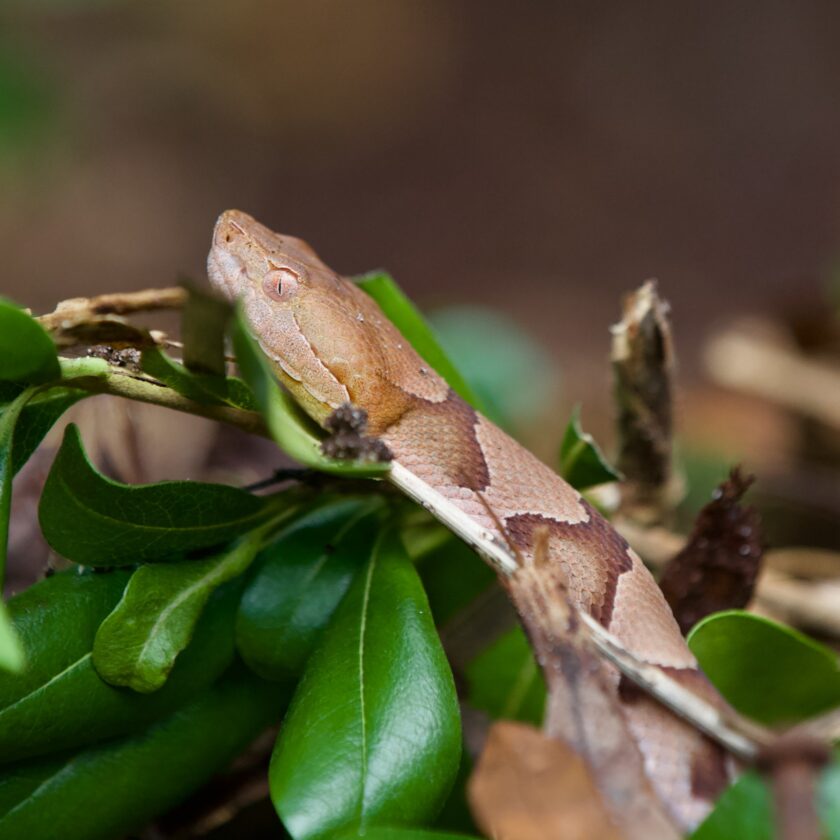
Bottom line with snakes? I’m going to give the snake a wide-berth. If the snake won’t clear the AO or is aggressive enough to merit killing (I’m not saying it doesn’t happen – it does occasionally), I’ll probably kill it with a stick. If it really needs shooting, though, I’m confident enough in my accuracy to shoot it with a regular bullet. If chose to shoot I would use extreme caution to avoid hurting myself, another member of my party, and ensure I understood the ricochet potential…yes, even with shotshells. If it’s far enough away that I can’t hit it with a bullet, it’s probably far enough away that it isn’t a threat to me.
Best Bet: Avoid Attack
I know most of you want to get to the gun stuff but this is important. If you’re pulling your gun it’s very likely that a lot of things have already gone wrong.
Seeing bears in the wild is a lot like seeing snakes: exhilarating because of the potential for danger, but very rare and usually not dangerous at all. As with snakes I enjoy seeing the bear from a distance and give a wide berth. Bears can go about their business unless contact becomes absolutely unavoidable. The best wilderness predator defense is simply to avoid the predators. There are some key ways to avoid contact with bears and (to some extent) mountain lions.
First and foremost, don’t inadvertently sneak up on the bear. Bears have good hearing, but the woods have a way of dampening sounds. Foliage, tree trunks, terrain, and even fog can absorb sounds and inhibit their transmission. It’s easy to walk up on a bear if he or she hasn’t heard you coming. I began thinking about this article because of a tunnel-like trail through a dense thicket we were walking through the other day. As I looked side to side I began to notice the occasional heavy game trail. I made sure to broadcast our presence loudly and often.
There are several ways to let the bears know you are coming. Unless they are extremely (and overly) acclimated to human contact, are protecting cubs, or are starving, they will clear out upon hearing you coming. How do you let the bear know you’re coming?
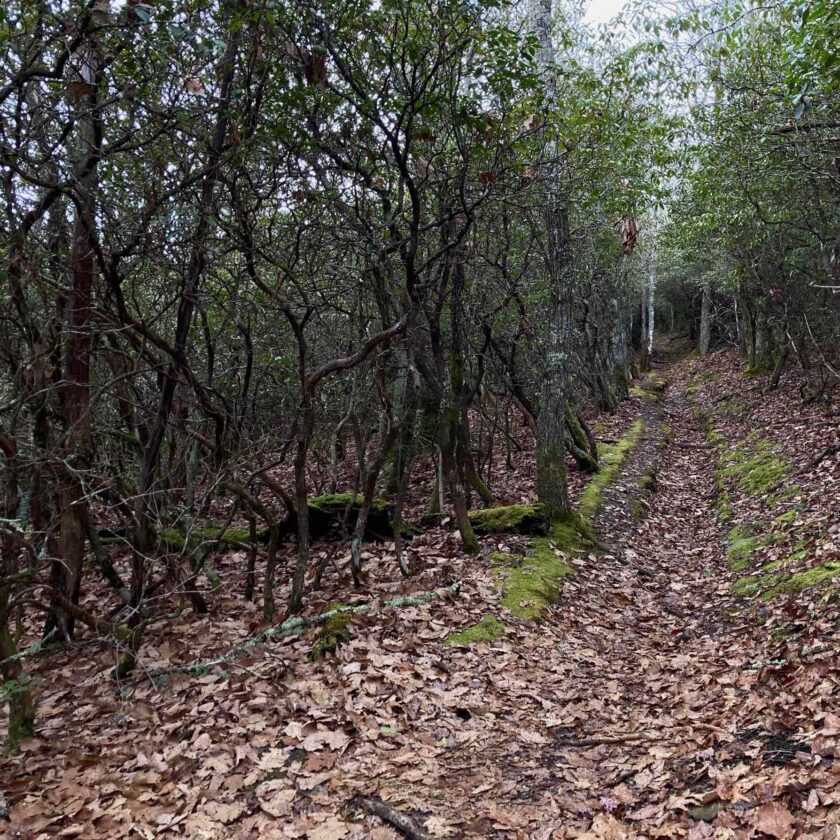
Human voice: this is the cheapest solution. As we move through the woods I am constantly giving a hail and hearty, “Yo bear!” Sometimes I bump into a hiker who has no clue what I’m doing, but only rarely (we try our best to avoid crowded trails). I used to be a bit shy about this…until I spent a lot of time in British Columbia where bears are extremely common, and everyone knows it. Voice has the benefit of being free and easily adaptable. If you’re with a group you can just keep a loud conversation going, or you can specifically yell things into the forest.
Bear bells: If you don’t want to walk down the trail shouting you can attach a bear bell to yourself. Bear bells are just small bells that constantly tinkle to let animals know you’re coming. They have the benefit of being a bit quieter than shouting and the are always on. It’s easy to forget to shout but your bear bell will keep ringing. Bear bells are also an excellent way to let other hikers know you’re coming up behind them. My girlfriend and I both have these bear bells on our kit.
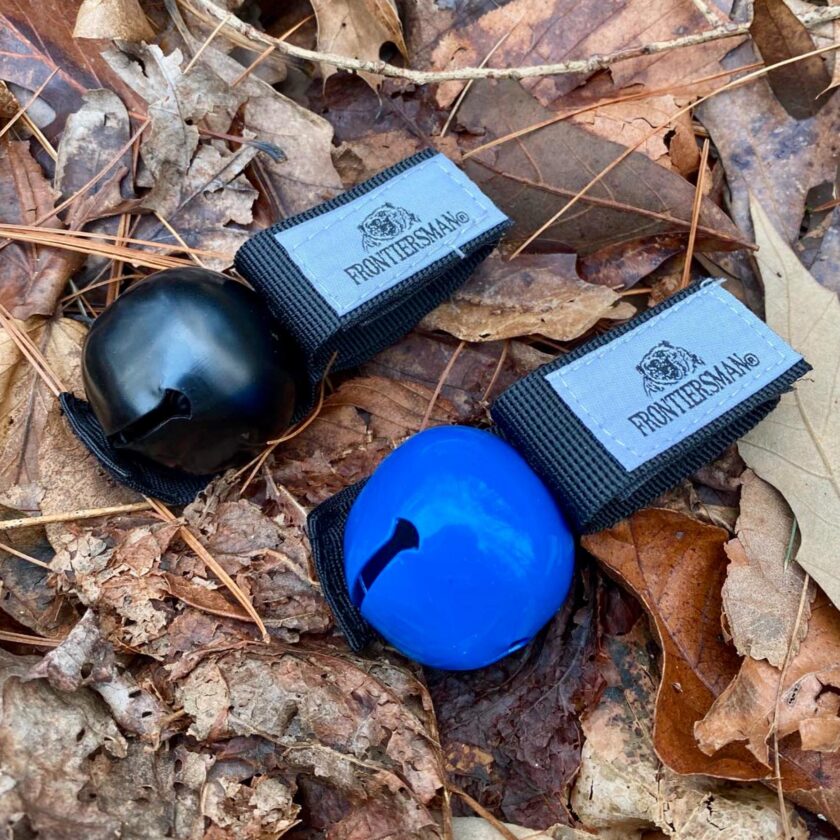
Keep your head up. It’s much easier to avoid trouble if you see it coming. It’s easy to get in the habit of walking with your head down and choosing your footfalls, but pick your head up occasionally. Even if it means pausing for a couple seconds, pick your head up and look around. Mountain lions tend to circle behind prey and attack from the rear, so check your six occasionally, too. Even if you don’t see the lion you’ll let him know you’re checking behind you.
Route/campsite selection: Some areas naturally make it more difficult for you to be heard. Creeks and rivers are a great example: the rushing of the water covers a lot of other sounds. Spending significant time traveling or camping along a creek means you may not hear a bear…and the bear may not hear you. Heavy brush and thickets dampen sound with a similar result. Limit your time spent in these places, and announce yourself loudly and often (bear bells might not do the trick in these places).
In the vast, vast majority of circumstances these techniques will keep bears and lions away from you. But not always.
Second Best: Look Intimidating
Should you have the good fortune of seeing a bear at close range there are some things you want to do to keep the interaction, um, hands-off. They basically all revolve around letting the bear know (or maybe “tricking it into thinking”) you aren’t afraid and making yourself look big. Most of you have probably already read these, but here goes, anyway. If you come around a bend in the trail and find yourself face-to-face with a predator:
Don’t turn and don’t run! Generally it is recommended that you stand your ground and face the animal, whether bear or mountain lion. Mountain lions specifically attack from the rear, so turning your back provides their ideal opportunity. It is also recommended you avoid looking the animal in the eye. Running can cause the “prey drive” to kick in. The animal will very likely give chase. If it gives chase it will certainly catch you.
Make yourself as large as possible. If you are confronted by a predator – a bear on the trail in front of you, for instance – you want to stand your ground, and make yourself look as big as possible. Get everyone online. Raise your arms in the air. spread out coats and jackets to make your silhouette wider. Do whatever you can to look as big as you can.
Stand your ground if the bear charges. This is the hardest one, but do your absolute best to stand there if the bear charges. Bears are known to bluff to see if you’ll turn and run. If you do you’re probably going to have a bad day, so stand there until the bear breaks off. While standing there I would be hurriedly readying whatever defenses I had… which brings us to the part that most of you are probably hear for.
Third Best: Defend Yourself
This is the part you’ll be most interested in. Many of you have probably heard the old axoim, “if it’s black fight back, if it’s brown get down.” This little saying means that black bears generally attack when they are hungry and a docile human is an easy meal. You should always fight a black bear with whatever is at hand.
Brown bears are not looking for a meal. They are looking to run off a threat or competitor. If you fall down and become non-threatening the bear may leave you alone. As was the case with Todd Orr (an acquaintance of mine) they bear may leave, but only after inflicting serious injuries to you. So the “get down” axiom may be most applicable if you don’t have a great means to defend yourself, or don’t get it out in time to deploy it effectively. I recommend having some means of defense when in bear country.
Bear spray is a fantastic option. A lot of gun guys scoff at it but bear spray is powerful stuff. Bears have a sense of smell hundreds of times more powerful than humans, meaning a much more sensitive snout to attack with pepper spray. And bear spray is very strong: high quality spray has a major capsaicinoid content (MCC) of of 2.0% compared to about 1.3% for very powerful pepper spray.
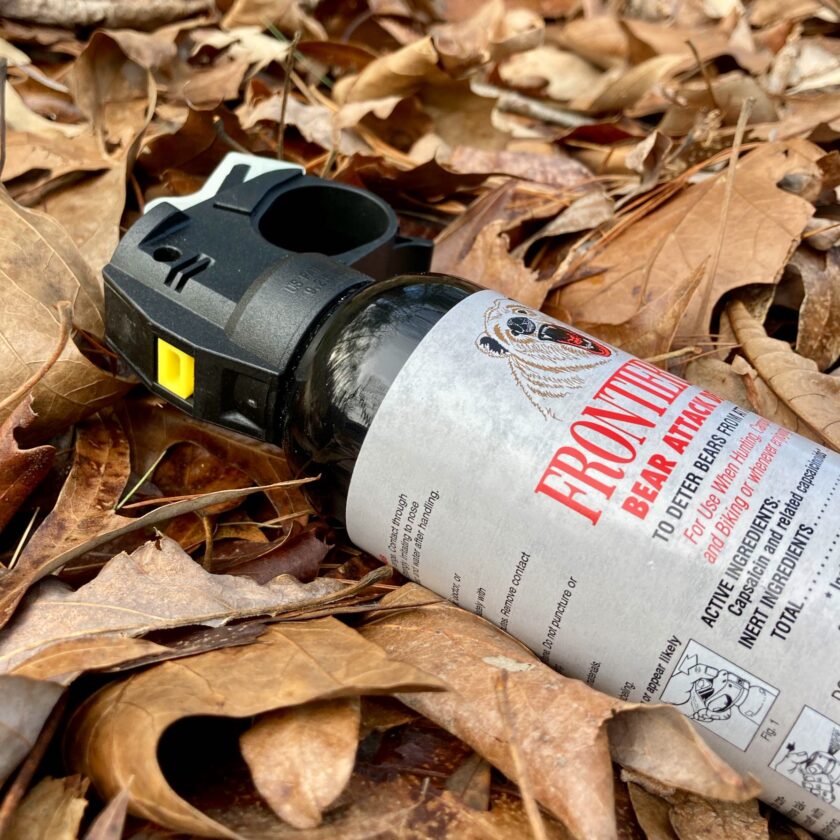
Bear spray gives you some options that guns don’t. When we hike together my girlfriend carries a can of bear spray and I carry a pistol and pepper spray. As I’ve told her, even if the bear has me wrapped up, spray away. I’ll worry about the effects of the spray later since they are far less deadly than bear bites and claw wounds. With a gun you’d have to be much – MUCH – more judicious if a loved one was in the line of fire. Bear spray can also be carried openly, making it fast and easy to access under stress.
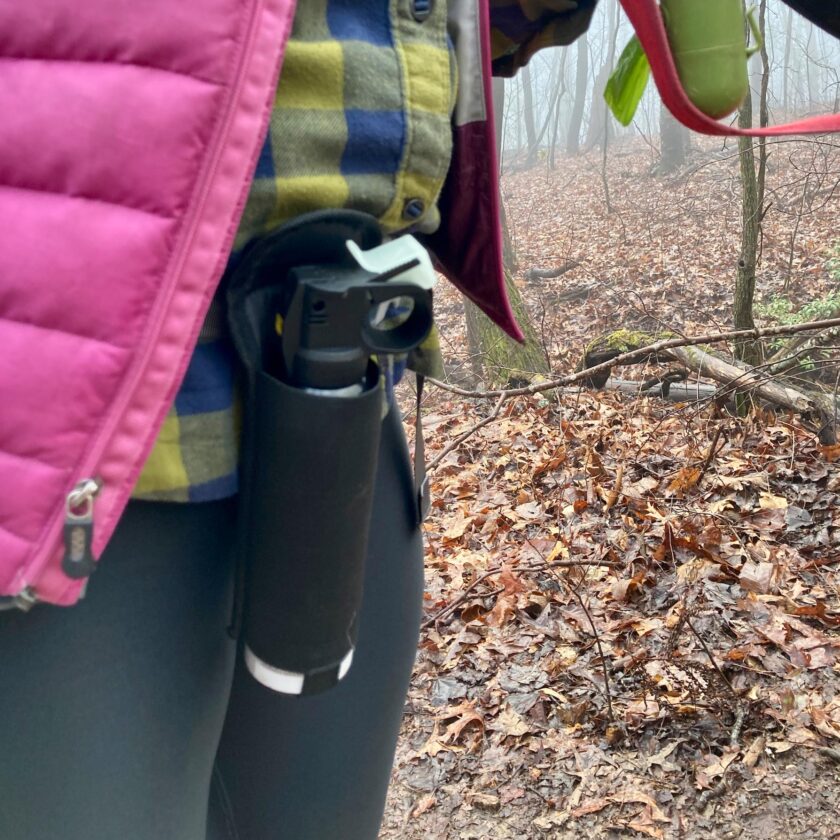
We own and carry Frontiersman bear spray. It’s produced by the same people that make Sabre Red pepper spray. Sabre Red is a highly trusted brand, so I trust Frontiersman, too. I recommend you test fire your spray before deploying it. Bear spray isn’t just for bears. It will also work on dogs, and if it’s all I had I would certainly try it on a mountain lion or charging moose. And – with its greater MCC, physical size, and increased range – it should work better than any pepper spray against human predators.
Firearms for Predator Defense
I pretty much always carry a handgun. This applies whether on trail or off, in the city or the country, hiking or running errands. There is very little that I do differently because I am hiking. There are a few considerations here. I’m not going to presume to tell you what to do, but I’ll throw out a few things to think about that may help drive your decision.
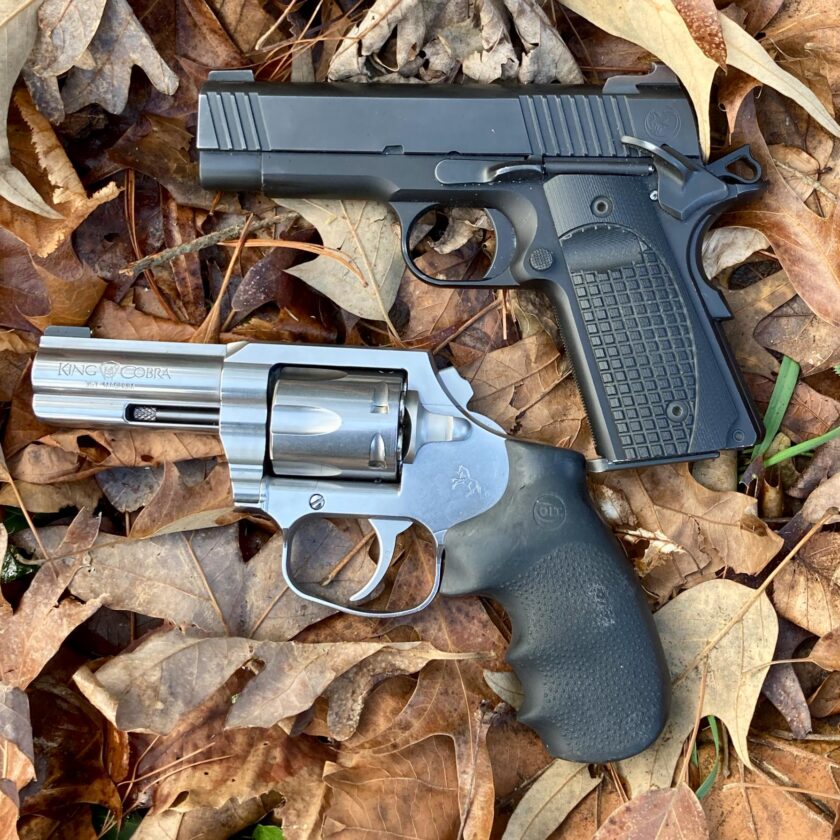
The first question you may ask is, “pistol or revolver?” Revolvers have some mystique as outdoor guns. In a great deal of revolver research, competition, training, and practice I haven’t found revolvers to be substantially more reliable than semi-autos. Grit can bind up a revolver pretty quickly. I’m not saying revolvers are unreliable – not by any stretch. However, I wouldn’t choose them on the basis of “ultimate reliability.” Revolvers do have a couple other potential advantages, however.
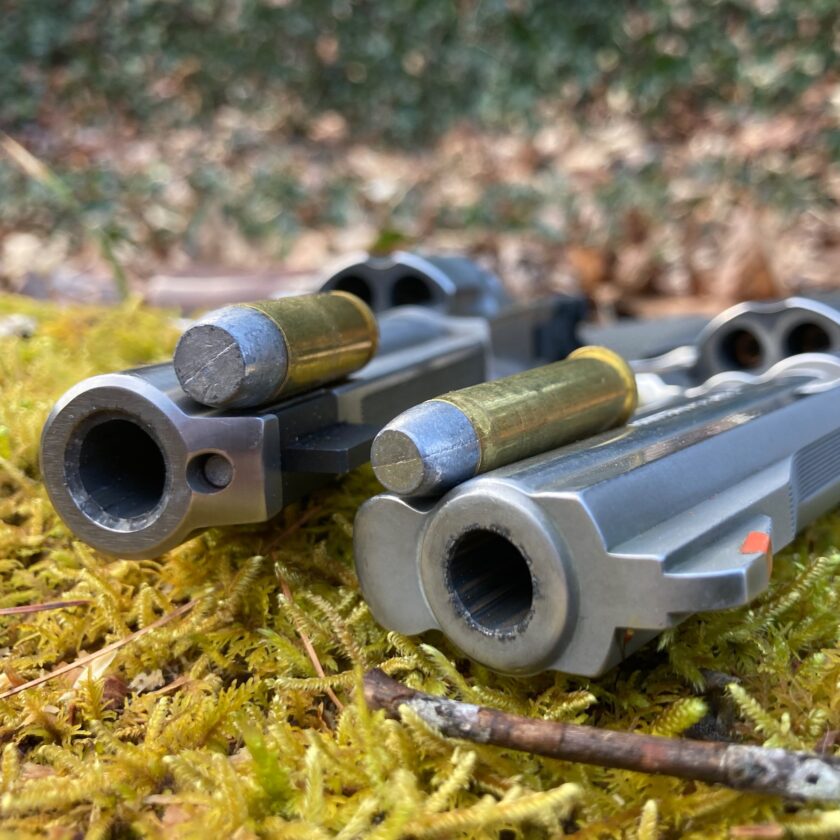
First, revolvers can often be chambered for more powerful cartridges than semi-auto handguns. I own revolvers in .357 Magnum and 10mm. I wouldn’t feel uncomfortable carrying either of these revolvers into the wild…or at least not uncomfortable with the cartridges they fire. I would probably find myself physically uncomfortable, however. Guns that handle larger cartridges well are larger and heavier. Sure, you can find feather-weight J-Frames in .357 Magnum, but I would contend that accuracy and speed will likely be comprised in such a package and would recommend against them.
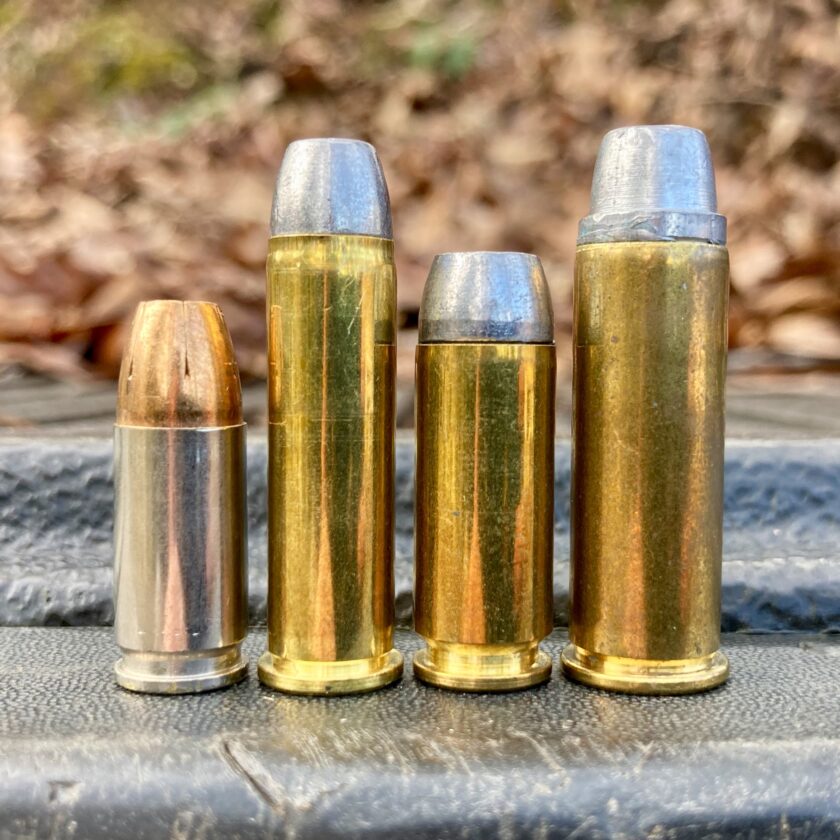
Personally, I question the importance of handgun caliber for defense after having read THIS ARTICLE (check it out). It covers 93 bear attacks that were defended with a handgun. The bears were black, brown, grizzly, and polar. Calibers range from .22 LR to .460 S&W. In 97% of cases the attacks were successfully repelled. Attacks against bears were repelled by .22s, .380s, .38s, and 9mms, just as efficiently as those repelled by .44 Magnum and .454 Casull.
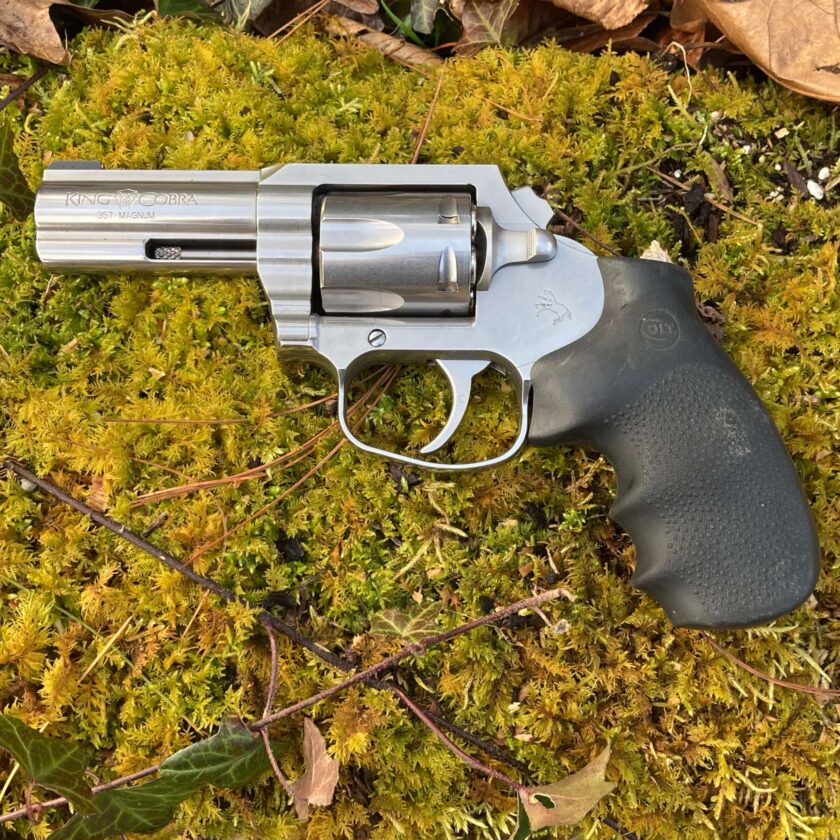
The other advantage revolvers enjoy is their ability to fire when pressed firmly against an adversary. The reciprocation of an auto’s slide presents an opportunity for the slide to pick up skin, clothing, fur, etc., or simply fail to return completely to battery. The revolver is generally held to be more reliable in such a situation. It is unlikely you will be in intimate contact with a bear, but charges are fast and attacks sometimes begin at very close range. You may not have time to draw before the bear is upon you.
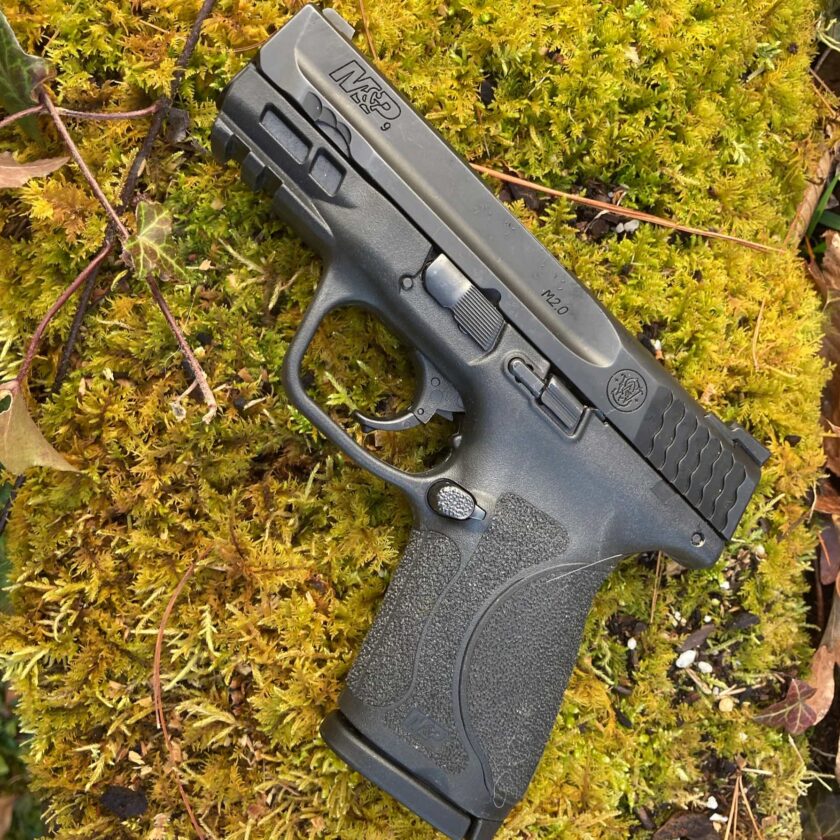
Ammunition selection: again, I don’t know if it makes all that much difference, but if I were loading up a gun specifically for bear country, I think I’d generally favor deeper-penetrating bullets. Heavy hard-cast lead bullets from the likes of Double Tap Ammo and Buffalo Bore probably offer the best bet in this regard. However, these rounds often come at the expense of heavy recoil, a heavy gun, or both.
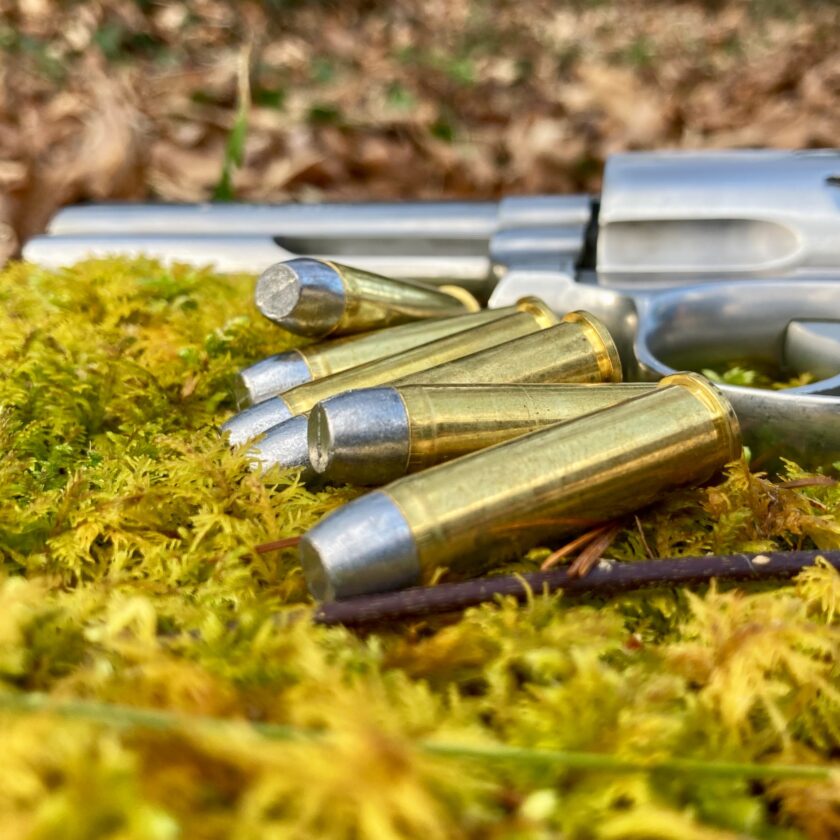
My most important criteria in regards to ammunition selection would be reliability in my chosen firearm. I’d take the 110-grain JHP that works reliably over the 180-grain solid that doesn’t. Next, I would choose a combination that I could shoot well by objective standards of accuracy and time, as measured by scoring targets and the use of a shot timer. In some guns it is possible to shoot very powerful cartridges quickly and accurately, but there’s only one way to know that a particular combination of gun, ammo, and shooter are in tune.
What do I carry? Honestly, nothing special. I carry my EDC handgun – a Nighthawk 1911 chambered in 9mm. Rather than my normal AIWB holster, I carry in a Kramer OWB when hiking. It’s loaded up with 124-grain +P Federal HSTs, and I carry a spare 9-round magazine. Importantly, this combo has proven itself reliable and I have many hours of practice and training under my belt with this gun – many more than anything else I own.
Some Additional Thoughts on Defense Against Human
This article is generally about defense against animals. However, I want to offer just a few thoughts on defense against human predators, as well.
First, a firearm is useful only in a very narrow band of scenarios. I recently read Claude Werner’s excellent Serious Mistakes Gunowners Make and he drove this point home very well – firearms are not general-purpose items. They are a brilliant option in a tiny percentage of interpersonal confrontations, but completely useless in all others. I’ve written ad nauseum about pepper spray before, but just in case here’s the link again.
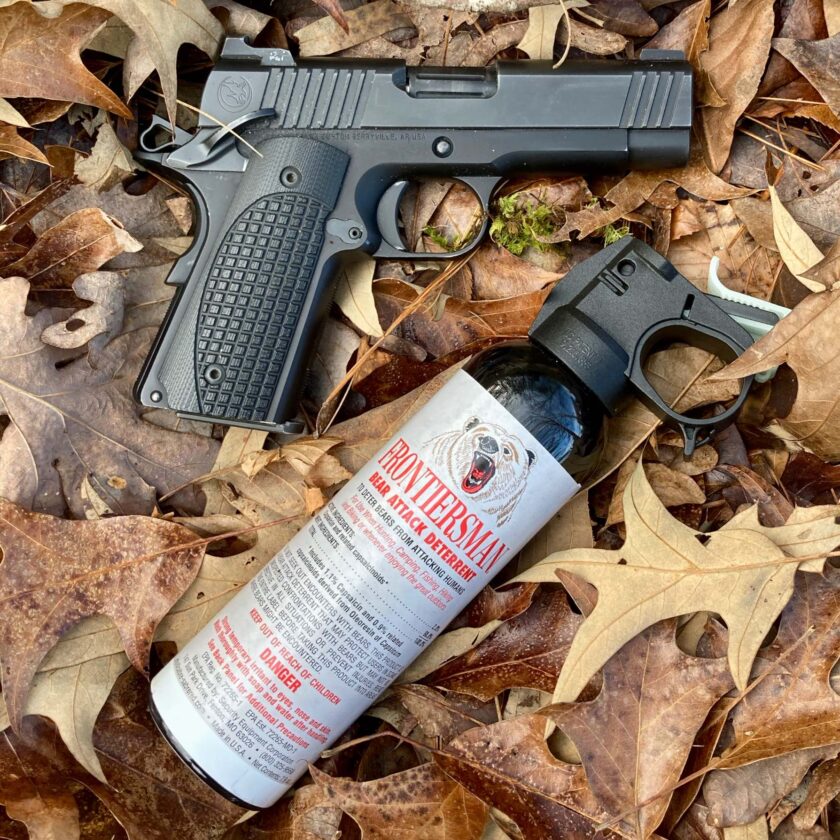
Second, poachers or illicit drug manufacturers will very likely be armed, very likely with rifles. Though remote, the potential to have to defend yourself at greater-than-normal self-defense distances exists. I would recommend being familiar with shooting your outdoors handgun beyond “normal” handgun distances. I regularly shoot at fifty yards and am confident in my ability to make hits at that distance. I occasionally shoot at 100 yards – at least enough to know what my gun will do at that distance. Again, highly unlikely, but if you’re halfway decent at a hundred yards you’ll have more than enough accuracy inside of 25, so why not get familiar with it? If you need some help, Lucky Gunner recently offered a tutorial on getting better at shooting at longer distances.
The Last Resort
If you don’t have bear spray, a gun, or one or both fail (both sometimes do) you’re down to the tools of nature. Humans are notoriously soft, toothless, and clawless. If you are found completely unarmed (as, again, Todd Orr was, or became†) you will have to use what you’ve got, for better or worse. The most important tool you have is your brain, and this is where the “black fight back and brown get down” get down really comes into play.
I interviewed Todd Orr a couple of years ago and he told me that being completely still was the key to his survival. He was attacked twice by the same bear and lived to tell it by keeping his head. He knew if he moved the bear would view him as a threat and visit further injury upon him. The mental discipline he must have had is unreal.
Just as Todd used everything he could – most importantly, his brain – use everything you’ve got if you’re forced to fight. Knives, rocks, punches, kicks, eye-gouges…whatever you have. Sure, the situation won’t look good. But as I’ve learned from months of reading survival books people overcome insurmountable odds all the time. Never give up!
The Bottom Line
To quickly recap, the best way to win a fight is to avoid it. Let them know you’re coming and you’re aware. Let them know through body language that you won’t be a victim. If they insist on pushing the attack, fight back with everything you have to quickly and efficiently win the fight.
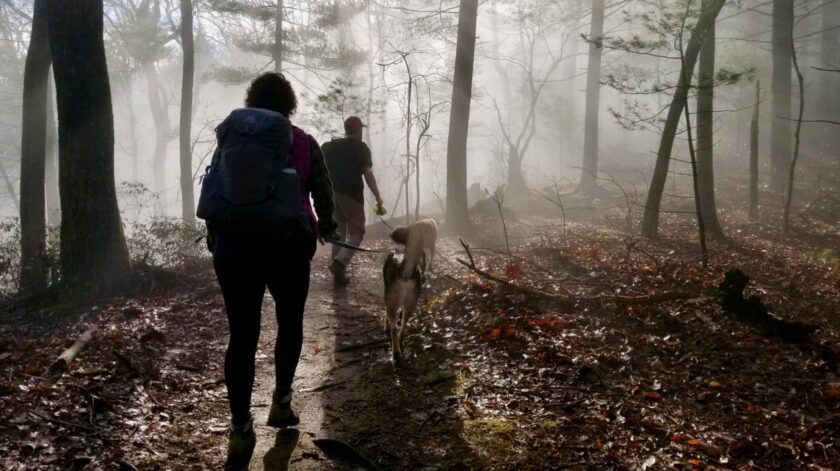
†Orr started the attack armed with both bear spray and a pistol. He didn’t deploy the spray on time/the grizzly sow ran through it too quickly, and his 10mm pistol became dislodged from its holster.






1 thought on “Wilderness Predator Defense”
Comments are closed.